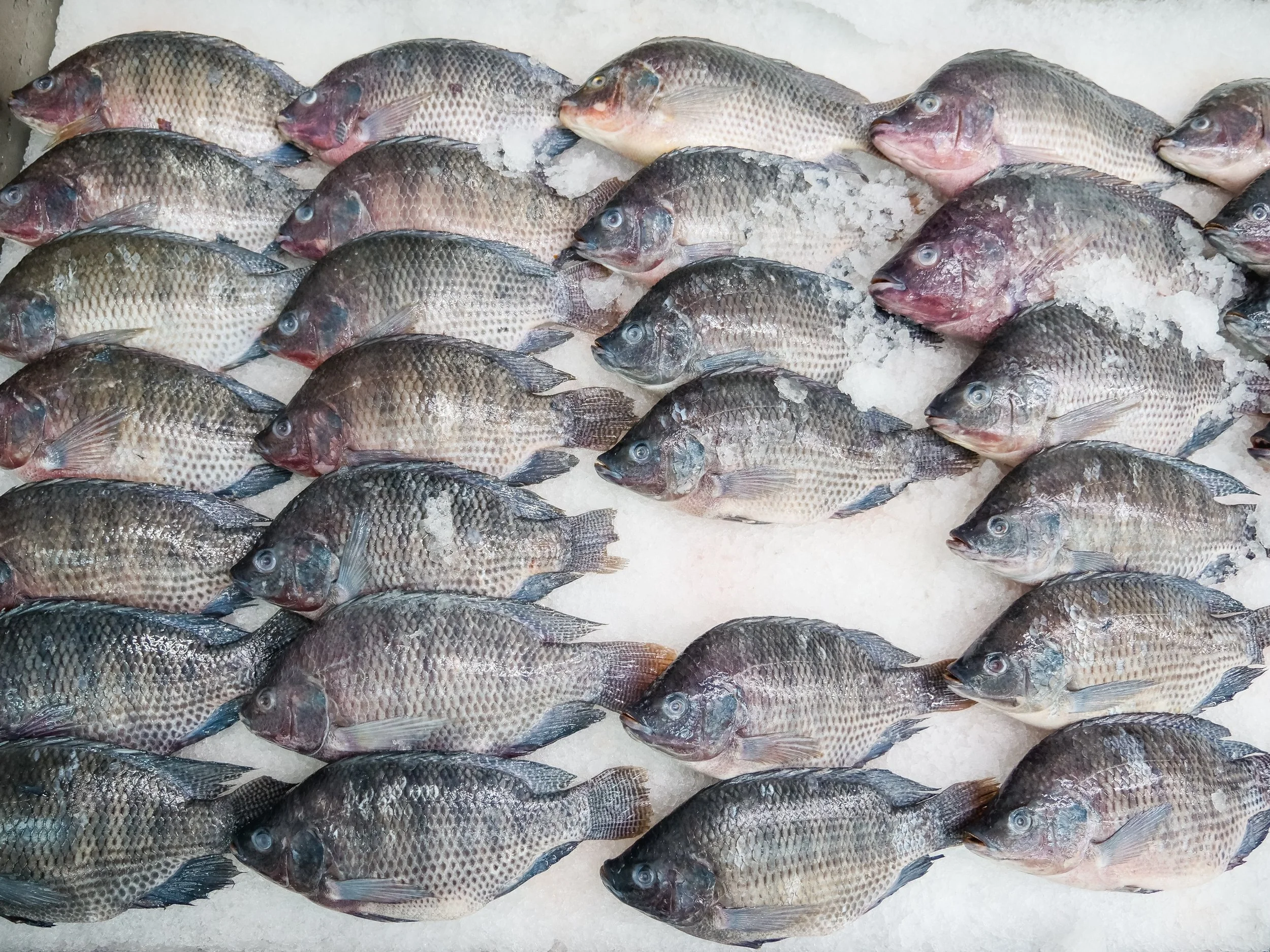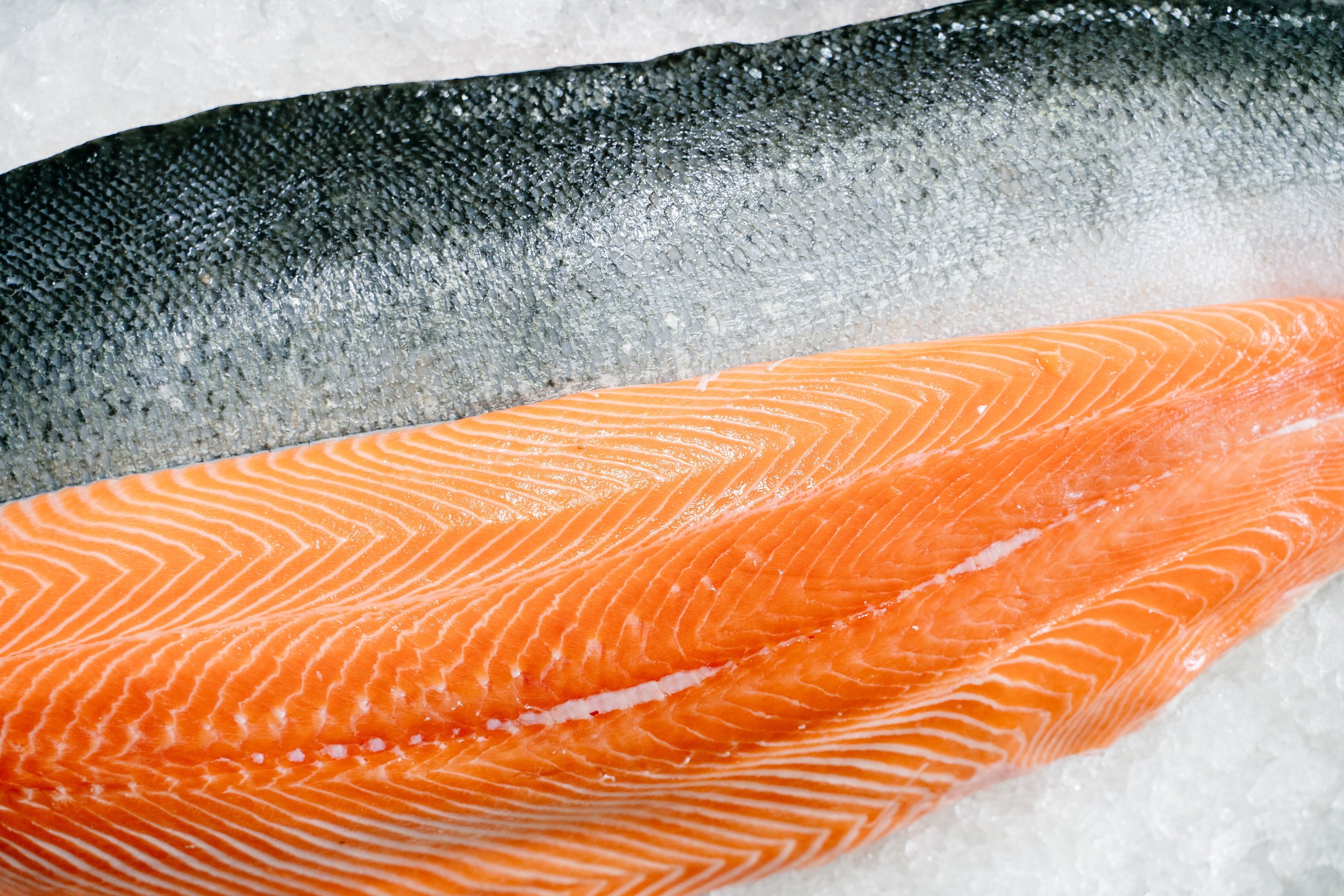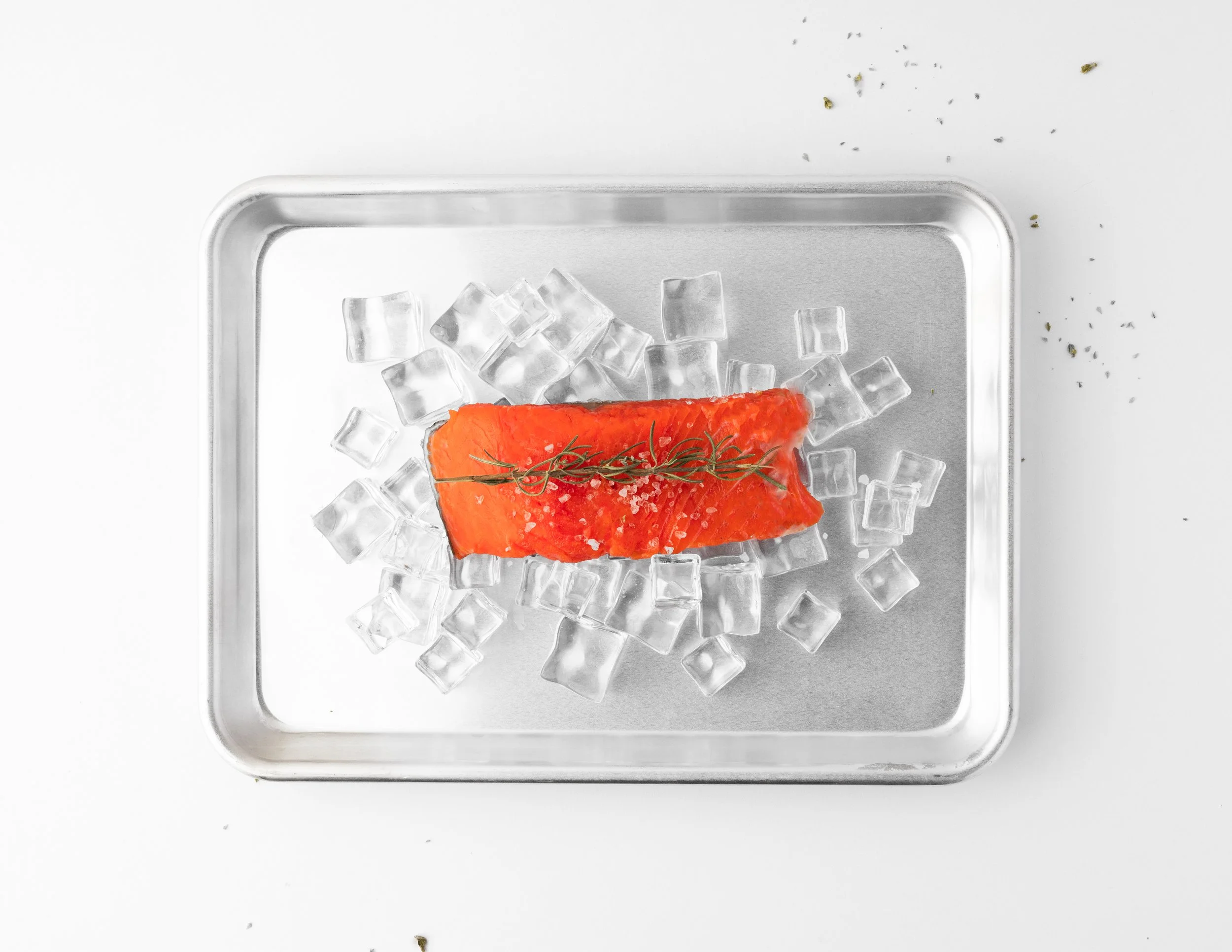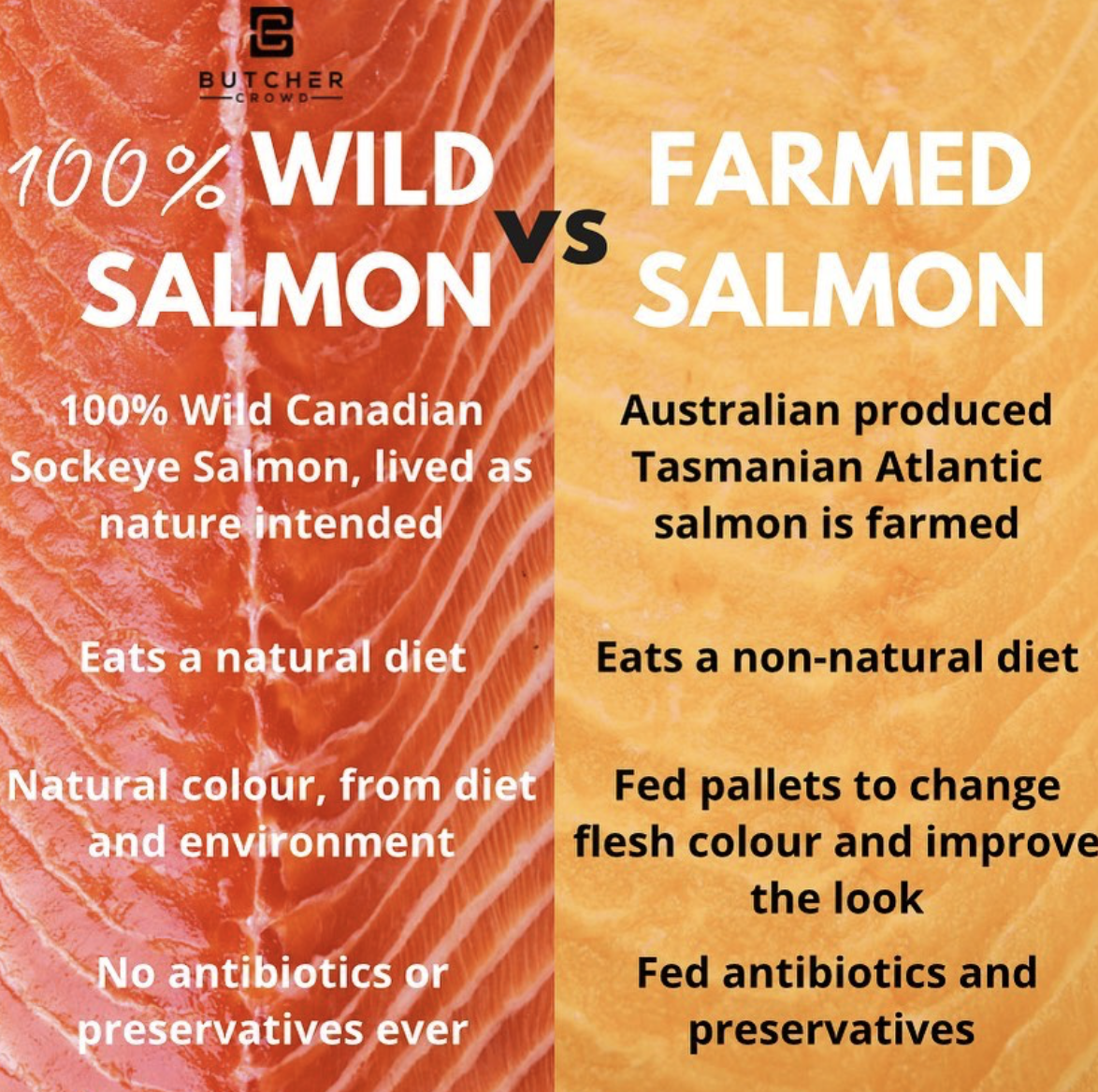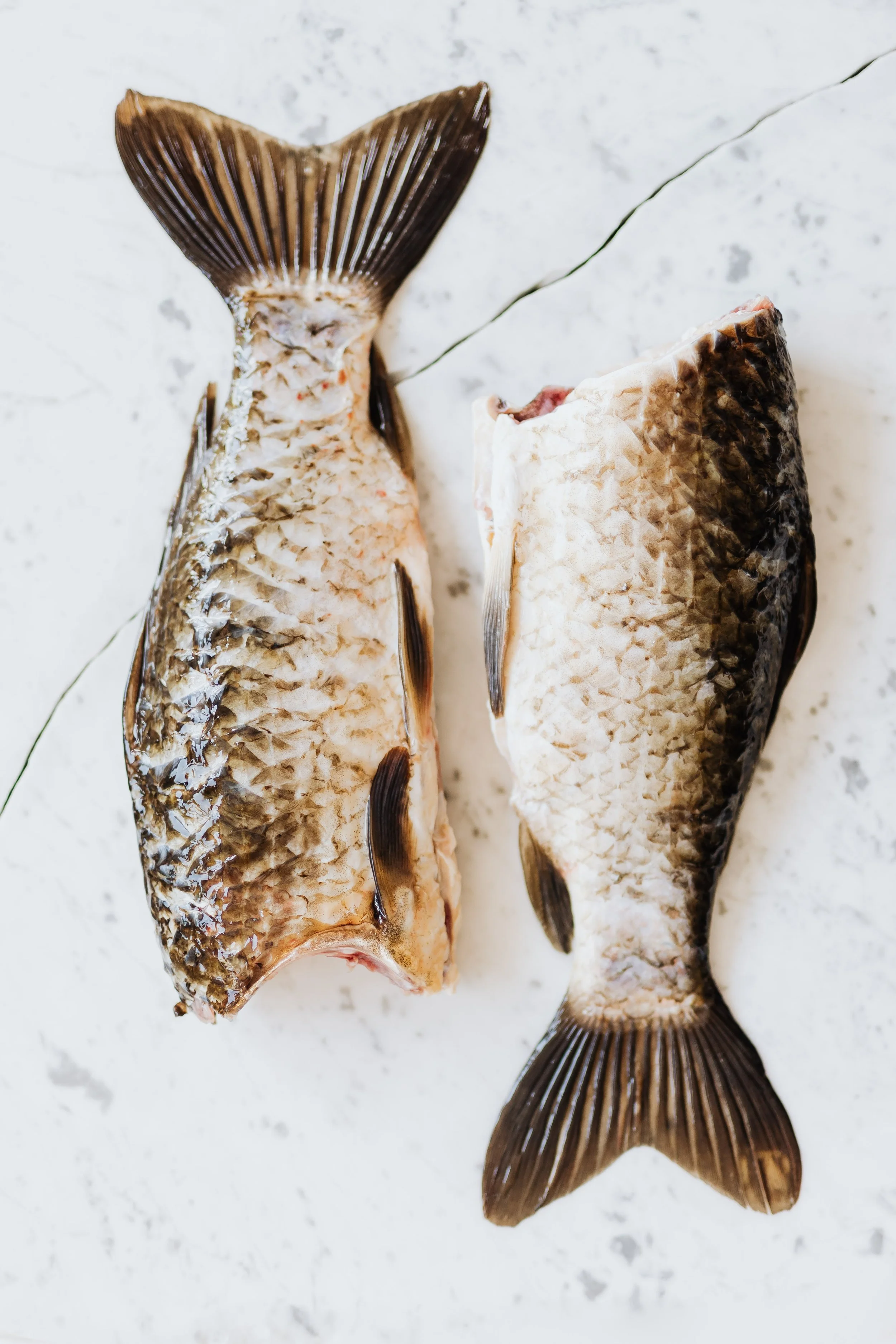Why choose Wild Seafood?
I’m big on sourcing good quality food as much as possible, I truly believe “nature knows best”. I recently shared with you the benefits of making the switch to grass-fed and free-range meat. So, I thought it was about time we discuss the benefits of wild caught as opposed to farmed seafood.
Why is Seafood good for us?
Seafood is an incredible protein source and is packed with important vitamins and minerals. In particular it is a fantastic source of anti-inflammatory omega 3 fatty acids eicosapentaenoic acid (EPA) and docosahexaenoic acid (DHA). Omega 3 fatty acids are important for our bran health, nervous system as well as assisting inflammation within the body. Seafood is also a great source of Vitamin D, with many people sadly deficient in the sunshine vitamin, eating seafood is a fantastic way to assist levels.
These are just a couple noteworthy nutrients, but each fish has varying nutritional profiles. This is why like all our food it is important to focus on a diet rich in diversity. A diverse diet is important for our gut microbiome health. So mix it up and try different sorts, there are so many delicious recipes, find some inspo at the end of this article.
The Low Down
Sustainability and overfishing are a big issue (and to be honest I have gone down a BIG rabbit hole with this). As consumers, we have the power to choose variety and support those practising sustainable fishing. If you are keen to learn more, read this Seafood Sustainable Article. Head to GoodFish for an Australian based seafood guide. They have an app to download too.
Mercury levels, microplastics and toxic pollutants are a concern worth considering for wild caught seafood. This is why it is important to note where the origin of the fish is. As we know some countries and waters are much cleaner than others. This is why I always recommend finding out where your food comes from. Watch this to get some insight into that state of many farms in Asia.
The Health Benefits: Compare the Pair
To me the pros of eating wild seafood far out way the cons.
Let’s compare wild salmon and farm raised Atlantic salmon (the most popular variety).
First of all, you can pick the difference between the two a mile off by simply looking at the colour difference. Wild salmon has a rich dark red colour, whereas farmed is light pink. The taste is also different, trust me once you taste wild salmon there’s no going back.
Wild Salmon
Have lived instinctively in their natural environment as nature intended. The range of nutrients in wild salmon is far vaster as their diet is constantly changing. There are no antibiotics, medications or preservatives.
Farmed Salmon
To achieve a more vibrant pink, farmed salmon is often dyed with a synthetic chemical. They are also given antibiotics to treat/prevent infections. I also wonder what treatments are going into the water. Their diet is not natural.
I have snatched this from my friends at Butcher Crowd who give a more in depth run down.
“Did you know, Australian produced Salmon is all farmed. This includes, "Atlantic Salmon", “Wild-caught salmon” and "Ocean caught Salmon". The title doesn't guarantee it lived a life in the wild! What it means is; "Atlantic & Ocean caught" Salmon both refer to fish farmed in ocean pens. "Wild-caught" Salmon are hatchery-raised and then later released and caught in river systems. All are fed a non-natural diet at some stage.
Atlantic Salmon is not native to Australia and doesn’t exist here in the wild. All Tasmanian Atlantic Salmon produced in Australia is farmed and housed in cage nets. Because of the large volume of fish in each cage net, they are prone to disease and infection. To control this, they are fed antibiotics and medications. Farmed Salmon are fed pallets, to alter and enhance the colour of their flesh to make it look more appealing for the consumer.”
Find out below how to get your hands on their 100% wild pristine water caught salmon below.
Where to Source It
If you’re like me and fishing isn’t for you, then you are going to have to buy it somewhere.
Your best bet is heading to your local fish monger or market and asking. They will most likely have a mixture of farmed and wild seafood, so it’s just a matter of asking.
I am noticing that supermarket chains are starting to bring in some more wild seafood (as it’s becoming more sought after), so keep an eye out, but definitely don’t rely on this. Most fish in the supermarket are imported from countries like Vietnam in poor murky water conditions.
When buying canned fish opt for BPA free and in brine or spring water. I would skip any oil based products due to poor quality unless it is 100% extra virgin olive oil. This can be an inexpensive way to buy good quality seafood there are some great wild caught and sustainable products being sold.
By far the EASIEST way to source quality seafood is through Butcher Crowd, who you probably know I work very closely with. This article is not sponsored by them, but they are the best in the biz and the simplest way to get your hands on wild seafood. They have AMAZING Wild Alaskan Salmon and other fish in their range like snapper, barramundi, prawns and mackerel. They are a super convenient meat box delivery service that provide Aussies with Grass-Fed/Finished Beef & Lamb, Free Range/Pasture Raised Chicken & Pork and also have Wild-Caught Seafood. If you want to try them out, use code “NATURAL15” for a sneaky discount here.
After some Recipe Inspo?
Wild Caught Salmon -
BBQ Salmon Skewers with Yoghurt Parsley SauceWild Caught Mackerel - Mackerel Fish Patties
Wild Caught Barramundi - Chilli Lime Barramundi
Wild Caught Prawns - Lemon & Garlic Prawn Pasta
Wild Caught Salmon - Miso Baked Salmon
Wild Caught Mackerel - Mackerel Fish Tacos
Wild Caught Salmon - Pistachio & Herb Crusted Wild Salmon
Wild Caught Prawns - Prawn Rice Paper Rolls
Want more?
My Low Tox Food Program is my signature program and honestly my true passion. It will help you get back in touch with REAL food. I go through every food product imaginable, giving you the confidence that what you are adding to your shopping trolley is free of nasties, additives and is actually going to nourish your body.
After some more nourishment?
Check out these articles!
· How to Choose a Plant-Based Milk
· How to Read Food Labels
· Are you getting caught out by Green Labelling?

